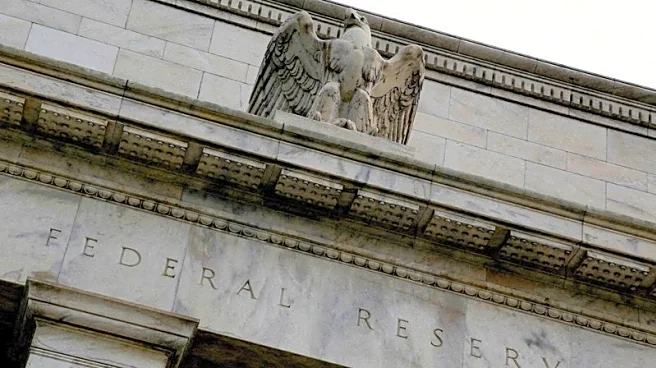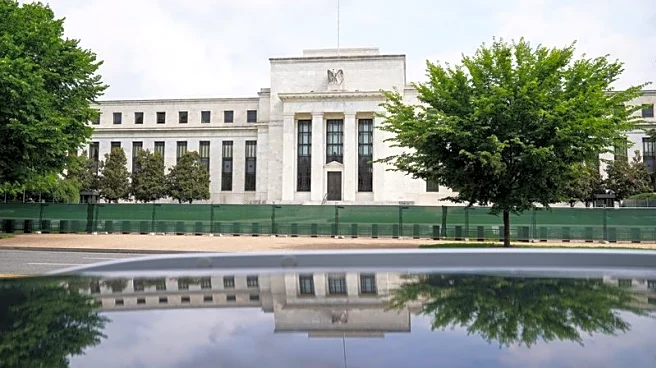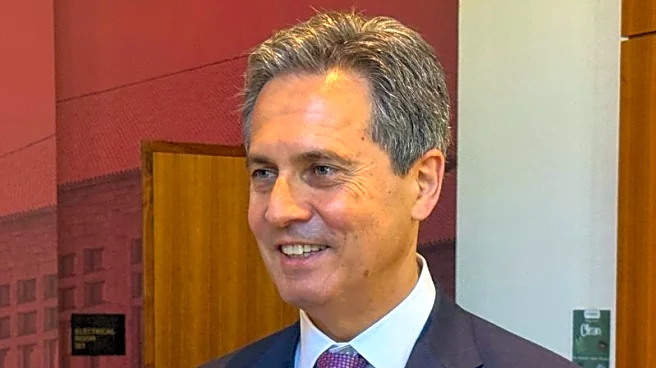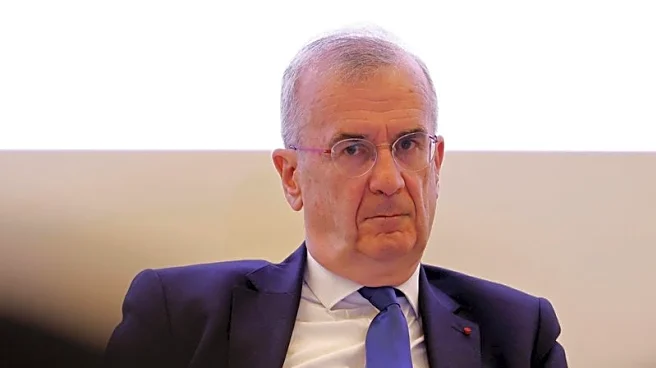What's Happening?
New York Federal Reserve President John Williams has indicated that a gradual reduction in short-term borrowing costs may be appropriate if the economy aligns with his forecast of modest unemployment gains and a softening inflation trend next year. Williams emphasized that the current monetary policy is at 'modestly restrictive' levels, which he considers suitable given the current economic conditions. He highlighted the challenge of balancing the impact of President Trump's tariffs, which are contributing to inflation, with the need to avoid excessively high interest rates that could harm the job market. Williams projects GDP growth between 1.25% and 1.50% this year, with unemployment rising from 4.2% to 4.5% next year. He also noted that tariffs are expected to increase inflation by 1.0% to 1.5% this year, with the Personal Consumption Expenditures Price Index anticipated to be between 3% and 3.25% this year, before decreasing to 2.5% next year and reaching the 2% target by 2027.
Why It's Important?
The potential rate cuts discussed by Williams are significant as they reflect the Federal Reserve's approach to managing economic growth and inflation amidst trade policy uncertainties. The decision to adjust interest rates can influence borrowing costs, consumer spending, and business investments, impacting overall economic activity. The tariffs imposed by President Trump are contributing to inflationary pressures, which the Fed must consider in its policy decisions. A rate cut could provide support to a softening job market, but it also risks exacerbating inflation if not managed carefully. Stakeholders such as businesses, investors, and policymakers are closely monitoring these developments, as they could affect economic stability and growth prospects.
What's Next?
The Federal Reserve is expected to cut its benchmark interest rate by a quarter of a percentage point during its September 16-17 policy meeting. This decision will be influenced by upcoming economic data, including the U.S. employment report for August. A weak jobs report could reinforce the need for a rate cut, while a strong report might complicate the decision. Fed Chair Jerome Powell has previously suggested openness to a rate cut, although some officials remain cautious due to the uncertain inflation outlook. Analysts believe that a rate cut is likely, barring any significant positive surprises in economic data.












